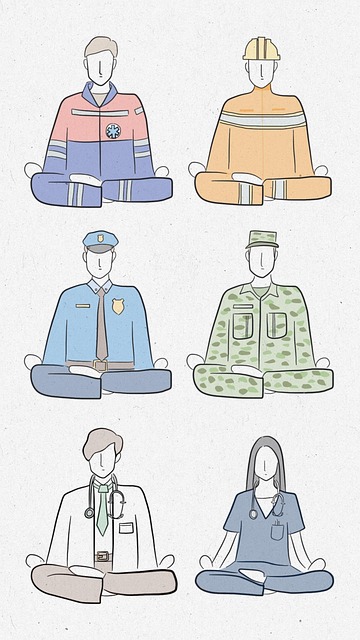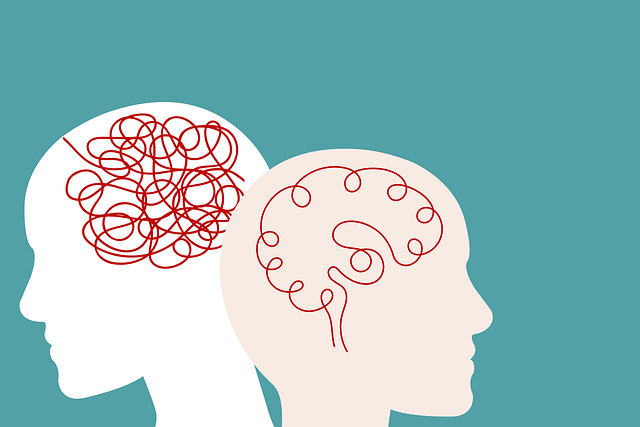Creating safe, supportive environments through clear ground rules and active listening is crucial for effective mental wellness groups, as seen in practices like Longmont Pain Management Therapy. Facilitators encourage open expression, validate emotions, and maintain confidentiality to build trust among participants, especially healthcare providers dealing with stress and challenging mental health topics. This approach not only enhances participation but also promotes inner strength development through community-based emotional well-being awareness.
Mental wellness group facilitation is a powerful tool for fostering healing and connection. This comprehensive guide explores effective techniques for creating a safe, supportive environment where individuals can navigate their mental health journeys together. From establishing ground rules and building trust to engaging in therapeutic activities, learn how to facilitate groups that promote open communication, encourage participation, and ultimately support Longmont Pain Management Therapy goals.
- Establishing a Safe and Supportive Environment
- – Creating ground rules for group sessions
- – Techniques to build trust and foster open communication
Establishing a Safe and Supportive Environment

Creating a safe and supportive environment is paramount when facilitating mental wellness groups. This involves cultivating an atmosphere where participants feel comfortable expressing their thoughts and emotions freely, free from judgment or criticism. As a group facilitator, it’s essential to establish clear boundaries, ensuring every member respects each other’s privacy and experiences. Using techniques like active listening, empathy, and validating emotional responses can foster this security.
In the context of Longmont Pain Management Therapy, for instance, facilitators play a crucial role in promoting emotional well-being promotion techniques and burnout prevention strategies for healthcare providers within the group setting. By prioritizing open communication, non-verbal cues that convey acceptance, and structured sessions designed to encourage participation, facilitators can help individuals find relief from anxiety and manage stress effectively. This supportive environment is vital for vulnerable members seeking to navigate challenging mental health topics.
– Creating ground rules for group sessions

Establishing ground rules is a vital step in creating a safe and supportive environment for a mental wellness group. As a facilitator, setting clear expectations can enhance participation and ensure every member feels heard. Start by encouraging open communication, where everyone respects each other’s perspectives and shares without judgment. This fosters an atmosphere of trust and encourages vulnerability, which is essential for emotional well-being promotion techniques.
Additionally, include rules that guide active listening, ensuring members focus on one another during sharing sessions. Prompt participants to maintain confidentiality, creating a non-judgmental space where personal struggles can be openly discussed without fear of exposure. These ground rules serve as a framework for a productive group dynamic and can be tailored to meet the unique needs of your Longmont Pain Management Therapy setting or even the broader context of Public Awareness Campaigns Development, ultimately contributing to Inner Strength Development among participants.
– Techniques to build trust and foster open communication

Building trust is a cornerstone in facilitating effective mental wellness groups. As a therapist or facilitator, creating a safe and non-judgmental space encourages participants to open up about their struggles. Start by sharing your own experiences, if relevant, to normalize conversations and show empathy. This sets a tone of vulnerability and fosters a sense of community among group members. Active listening is another powerful tool; pay close attention to each individual’s perspective and validate their feelings, helping them feel heard and understood.
Open communication flows naturally from trust and mutual understanding. Encourage participants to share their stories, using prompts like “How has this experience affected your daily life?” or “What self-care practices have helped you manage similar situations?”. These questions not only promote dialogue but also enhance Mental Health Awareness, offering valuable insights into the diverse strategies used for Depression Prevention within the group. Through Longmont Pain Management Therapy techniques, facilitators can guide members towards discovering their unique paths to emotional well-being.
Group facilitation techniques, when applied in a safe and supportive environment, can significantly enhance mental wellness. By establishing clear ground rules and employing strategies to build trust, facilitators create an atmosphere conducive to open communication. This is particularly relevant in Longmont Pain Management Therapy, where group sessions can offer unique benefits for individuals navigating their mental health alongside physical pain management. Through fostering a sense of community and understanding, these techniques empower participants to support one another, ultimately contributing to improved overall well-being.














